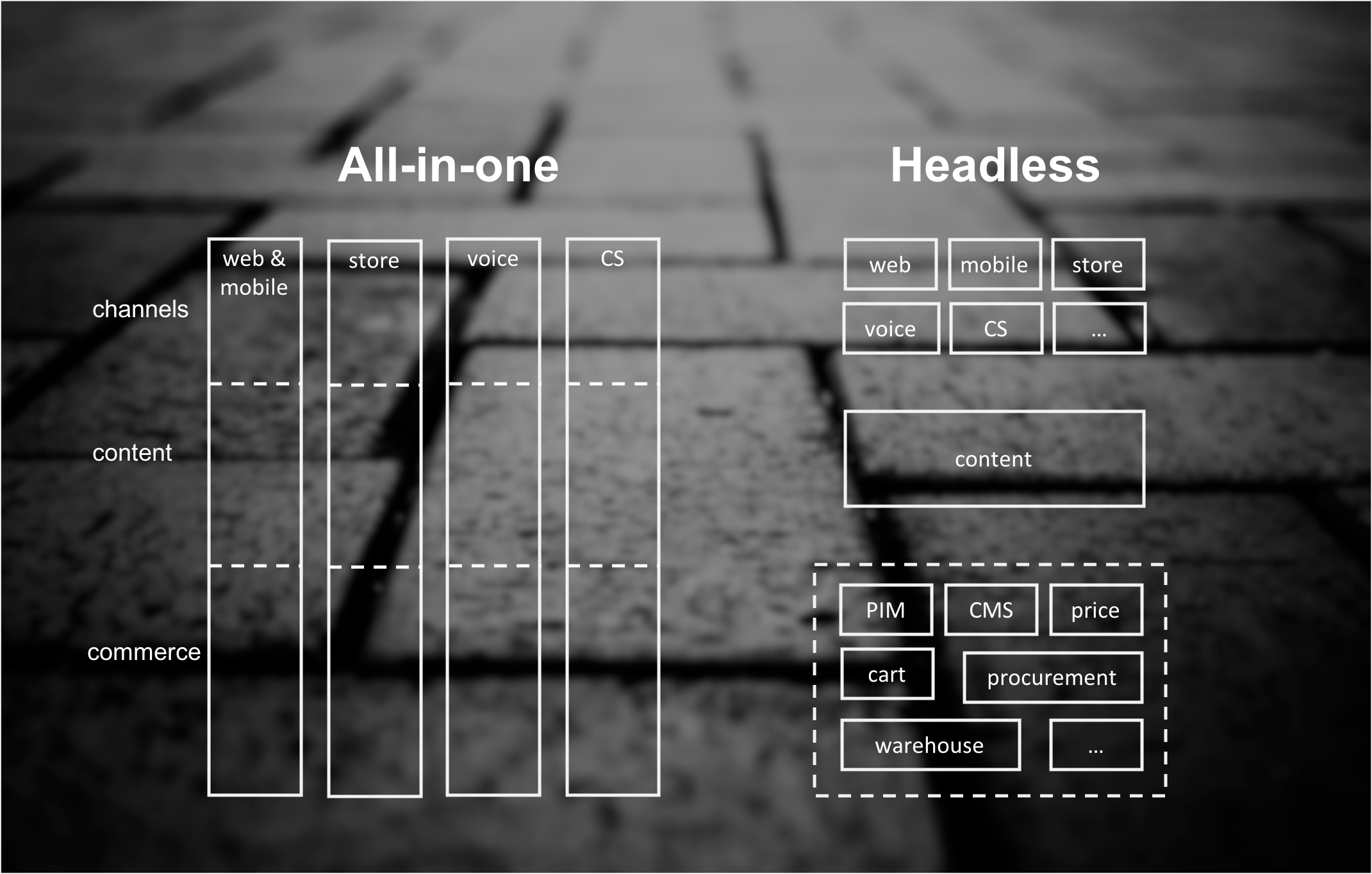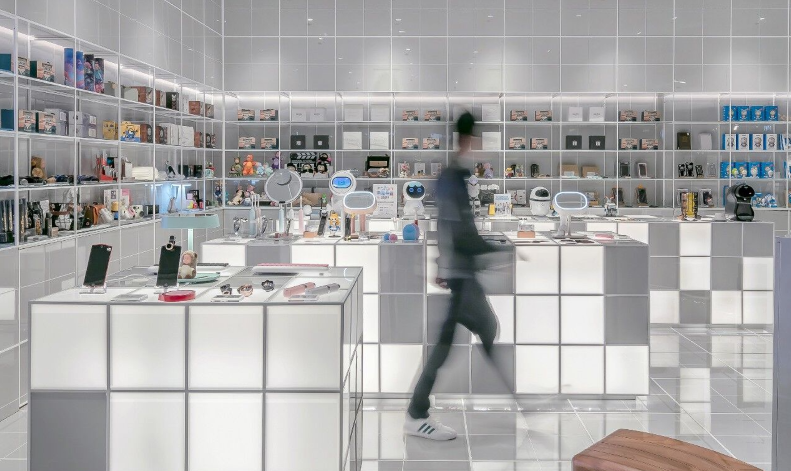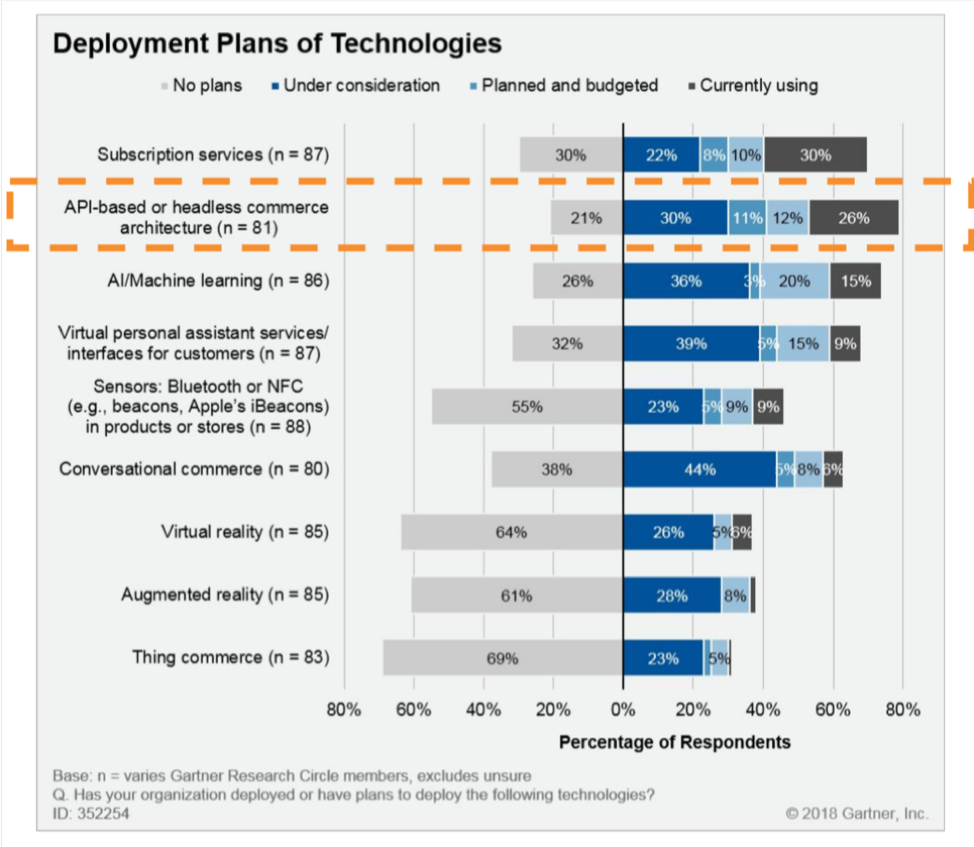In this article I will discuss how headless commerce and a service-oriented approach supports:
Platforms that contains all capabilities required for digital commerce with multiple channels. Commerce, order management, product information management, point-of-sales, marketing, etc are offered all in one: not only the services, but also the front-end user interfaces.
Mid-market and lower enterprise businesses or companies that are taking their first steps into the digital commerce arena often select these solutions.
What is headless commerce?
Headless commerce can be described as "commerce as a service" where the commerce features offer as functions that are accessible from any channel through APIs. This kind of solution is suitable for companies that want to focus on unified commerce, omni-channel experiences and where flexibility and scalability are key business requirements. The underlying architecture of these solutions is often micro-service driven and usually offered as a Software as a service

… a third model is Best-of-breed
A set of complementary best-of-breed software integrated. This strategy is not very common and mainly seen in enterprise-level businesses that can afford the integration costs and need of different expertise.
Comment: In dialogue with our customers “best-of-breed” is often used to express the need for flexibility - to replace a solution or system that used to be the best fit but doesn’t match the companies vision moving forward.
A seamless omni-channel experience…

Today’s customers expect seamless user journeys and omni-channel experiences, like this user journey:
Purchase across channels
A customer browses a retailer’s mobile site and saves desired items to his wish list. As he strolls through Instagram, the product appears again, now with a discount and the customer adds it to the shopping cart along with another product. Later, while on his laptop, the customer receives e-mail notification reminding him of the items in their shopping cart. The customer clicks the button to proceed and confirms the purchase. The delivery option “click-and-collect“ is chosen and within two days he’s notified that his order is ready to be picked up at the store.
Comment on challenges for the described user journey
A true omni-channel experience requires one accurate real-time version of customers, orders, stock, product information, prices, offers, etc.
If a product isn’t available in the online store, many of today’s implementations will not support purchase in this user journey. Customers expect accurate real-time inventory for all physical and digital stores. This reduces the risk of selling products that are out of stock. Customers also expect that the system keeps track of the discount that was offered via the Instagram campaign and follows the purchase to the desktop.
The support of this scenario is a lot easier to develop with a headless commerce approach compared to having multiple all-in-one solutions. The headless solution provides the same basic information that’s available in all channels - and it’s also easy to add future channels. (See the image in the section “Two dominating models” for a graphical explanation).
… that allow business to experiment with their offering, …

From a business perspective, it is important to constantly work on the offering. To create a hypothesis and try it out is the best way to get insights that are unique to your business and consequently make your offer stand apart.
Evaluate a new commerce channel
A company has decided to experiment with conversational commerce and wants to expose its offer through their chat.
Since their headless commerce solution already has APIs for the product catalogue, shopping cart and payment provider, the development time is shorter compared to creating the solution stand alone. Another advantage is that it gets real data and if user testing is positive, the new channel can be released independently of other deployments.
Extend your product offer with supporting services
A company that traditionally has only sold products, now want to extend its offer with services. The hypothesis is that it will add more value to the product and create loyalty to the brand.
Since these kinds of services can be regarded as digital products, they can fit in the existing product model with some minor modifications. Additionally, a booking system needs to be added to the commerce solution. If it can be used as a service via APIs, it could quickly be integrated in the existing service-oriented solution. This enables all channels to access new sales opportunity.
… flexibility and faster time to market of new features…

Another key business objective is to ensure fast time to market and development of new features.
Modifying the business rules for campaign codes
A company wants to add the possibility only to activate campaign codes for a selection of its products. The earlier business logic was implemented so that any discounts were applied for the entire assortment. Since the feature was introduced, the assortment has grown and the price range is very differentiated. Enabling discounts would in some cases result in unacceptable financial loss.
Since their headless commerce solution already has APIs to a specific discount module, the addition of an exclusion and inclusion feature can be added quickly in isolation without affecting other parts of the solution. The new functionality could also be deployed separately from other features, creating a friction-less update.
Adopting to global sales
A company that has previously only operated in the Nordics has decided to expand to the rest of Europe, North America and APAC. The existing payment service provider (PSP) only support sales in the Nordics and needs to be replaced.
The headless commerce solution is communicating to the Nordic PSP via APIs and hence can easily be replaced with a new PSP that also has an API
… and all 3 supported by headless commerce
There are several areas where a headless commerce solution offers good support, and I’d like to highlight the following 3:
1. Multi-channel
The more channels a retailer wants to use to communicate with their clients, the stronger the arguments for a headless commerce solution. Since it is based on a modular functions architecture you can easily add a new channel. For example, implementing voice to your solution at any time by reusing the same functions with a different user experience.
For a seamless omni-channel experience, it is also essential that inventory, pricing and orders are in sync across channels. In a headless solution this information can be accessible in real-time via API requests, whereas that sometimes is a problem in solutions where these requests need to be ordered as synchronisation batch jobs and it can take a considerable time for the channels show accurate information.
2. User journey experimentation
A modern API-based solution offers streamlined support for user journey experimentation. Proof of concepts can easily be created to use real-world data to see the end-result early in the development process.
3. Flexibility and faster time to market with new features
A headless solution allows for a flexible architecture and supports addition of new functionality and allows for replacement of third-party solutions. This could include upgrades or replacements of certain parts of the system, while leaving other parts untouched. An example could be upgrades needed in the warehouse or order management, that does not affect the payment solution.
Headless commerce matches our customers' technical ambitions
Compared to a couple of years ago, our clients now have clearer technical ambitions towards headless commerce solutions. For example, they now express that they want:
And this doesn’t only go for our clients. API-driven or API-based headless commerce is also the top investment for 2019 mentioned by the companies and organizations that Gartner interviewed.

Headless commerce - pros and cons
Pros
Headless commerce in short
These modern solutions can be seen in companies that are born digitally and disrupts their industries, with the most prominent example being Amazon. When operating in the same arena as these competitors, traditional companies need to find a way to adapt their ecosystem for scalability and flexibility to stay in the game.
And although many existing legacy systems will be around for several years to come, I think headless solutions will be a natural part of future commerce platforms that support a successful omni-channel experience.







